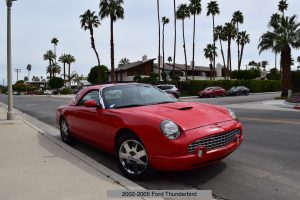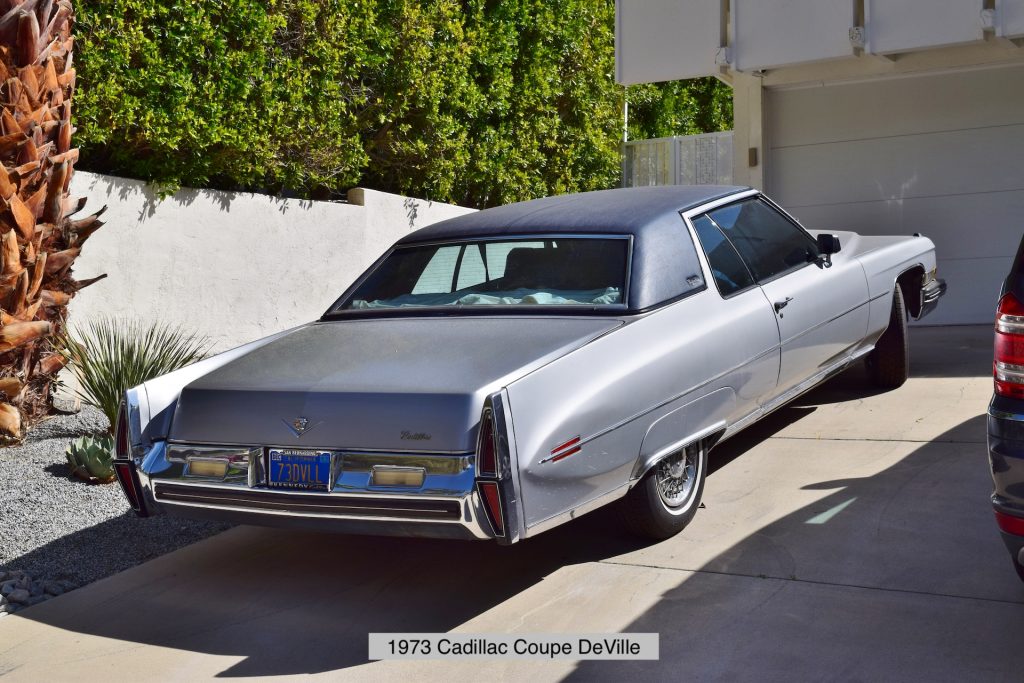If you take Interstate 15, heading south from Las Vegas, then go onto the scenic route via Kelso in the Mojave National Reserve desert, you will pass through Amboy (of which more later) and Cleghorn Lakes / Sheephole Valley Wilderness, then onto the Yucca Valley on Route 62, passing through Joshua Tree. After around 300 miles and 5.5 hours (with stops) later, you will arrive at Palm Springs.
Or Se-Khi (Boiling Water) as it was named by its first settlers, the native Indian Cahuilla people.
 The US Government established Aqua Caliente reservation here in 1876, comprising land laid out in a chess board pattern across the desert with the alternating “squares” given to the Southern Pacific Railway and the rest to the Cahuilla. The reservation measures 32,000 acres, of which 6,700 acres are within the Palm Springs city boundary, making the current Aqua Caliente band of Cahuilla Indians the city’s largest landowners and hence some of the richest in California. Don’t you love happy endings?
The US Government established Aqua Caliente reservation here in 1876, comprising land laid out in a chess board pattern across the desert with the alternating “squares” given to the Southern Pacific Railway and the rest to the Cahuilla. The reservation measures 32,000 acres, of which 6,700 acres are within the Palm Springs city boundary, making the current Aqua Caliente band of Cahuilla Indians the city’s largest landowners and hence some of the richest in California. Don’t you love happy endings?
During the early 1900s, the favourable climate enticed people to visit and, as a result, Palm Springs became a resort with hotels like The Desert Inn and The Oasis being early destinations. The latter was designed by the son of Frank Lloyd Wright. Sadly, however, I could not find it.
The El Mirador resort was built in the 1930s and it was around this time that movie stars arrived, attracted by the favourable weather and seclusion from the all-powerful gossip columnists. It is also within easy reach of Hollywood and Las Vegas.
Apart from the plethora of palm trees—although there is only one indigenous type, the rest being imports—the key attraction for me is the abundance of modernist architecture.
 Most houses could be described as bungalows but this would be doing them a great injustice. They incorporated the latest building trends and amenities of their time, including steel frames, pre-fab panels, floor-to-ceiling glazing, air conditioning, swimming pools and much more.
Most houses could be described as bungalows but this would be doing them a great injustice. They incorporated the latest building trends and amenities of their time, including steel frames, pre-fab panels, floor-to-ceiling glazing, air conditioning, swimming pools and much more.
Many of these designs came from the pens of architects such as Neutra, Cody, Krisel, Harrison and Wexler. The Harrison and Wexler partnership, along with Krisel, provided many of their designs to the Alexander Construction Company which built the northern sector of Palm Springs known as Vista Las Palmas. They are notable for their roof designs which came in “W”, “Butterfly” and “Swiss Miss” chalet styles. Some say that most were single storey to avoid the chance of being overlooked by the neighbours.
The area was quickly populated by the stars including Debbie Reynolds, Donald O’Connor, Dean Martin, Dinah Shore, Joan Collins, Rock Hudson and many more. Rat Pack member, Peter Lawford owned a house here that played host to his brother-in-law J F Kennedy. During one of JFK’s visits he met Marilyn Monroe, a near neighbour, and the rest is history.
 We were lucky enough to rent a house in this neighbourhood. Once owned by the Sears family from Chicago, it was close to the famous Alexander family home. Designated “House of Tomorrow”, and designed by Krisel, it was rented by Elvis and Priscilla Presley for their honeymoon.
We were lucky enough to rent a house in this neighbourhood. Once owned by the Sears family from Chicago, it was close to the famous Alexander family home. Designated “House of Tomorrow”, and designed by Krisel, it was rented by Elvis and Priscilla Presley for their honeymoon.
Enough name-dropping, this newsletter is about things automotive, not a travel agent’s brochure.
Did I say that the climate here is largely hot and dry? I did? Good, because this can lead to some very well preserved and rust-free classics, many of which are still being used regularly. So, let’s take a look at what was…Parked in Palm Springs.

We didn’t have to look far for the first item, for just around the corner, sitting outside the house of a local club owner, was a 1962 Studebaker Avanti, the best example that I have ever seen.
Manufactured between April 1962 and December 1963, fewer than 5,800 originals were built, with only 1,200 leaving the factory in 1962. Using a fibreglass body – the shape was difficult to achieve in steel – by the same company that produced the Corvette body, it featured a 240hp or 290hp V8 engine (supercharged as an option) and could hit 168 mph. It was the first US production car to feature front disc brakes as standard.
Quality issues dogged the early production models and poor sales resulted, not helped by the general belief that this 100-plus years old company was on the rocks. Ian Fleming owned one, as did American singer, Ricky Nelson. Coincidently, it was designed at breakneck speed by a team led by industrial designer, Raymond Loewy, in a rented house right here in Vista Las Palmas. Other designs of his with which you may be familiar include the Coca-Cola bottle, the Lucky Strike cigarette packet and the 1960s Hillman Minx.

There were plenty of cars in driveways too. Opposite, our neighbour parked a silver 1973 Cadillac Coupe DeVille, with another drive making space for two Europeans: a Porsche 912 Targa of 1967 to 1969 vintage and a Triumph TR3. For the Porsche afficionados in our club, I believe that the 912 was a less expensive version of the 911 with less power from its 1.6 litre flat four but good low end torque. It was notable for its chrome-plated bumper inserts, air grille and round exterior mirrors.
Next came this blue/white Lincoln Continental, probably a Mk III from around 1969, a large car in a large drive.
 There were some more Europeans on the roads and we spotted a very presentable MG Midget, a BMW 8 Series (E31 anybody?) and a white Jaguar X300, all totally rust free. Oh, and not forgetting the ubiquitous VW Beetle.
There were some more Europeans on the roads and we spotted a very presentable MG Midget, a BMW 8 Series (E31 anybody?) and a white Jaguar X300, all totally rust free. Oh, and not forgetting the ubiquitous VW Beetle.
It’s amazing what you can see cruising Palm Canyon Drive when you are sitting enjoying a coffee. Naturally, with camera at the ready, you need to leave the coffee and speak to the car owner. Which is exactly what I did when I spotted, for the third time, this Lincoln Premiere 4 Door Sedan from around 1956 and based on the cheaper Capri.
Third time was lucky for me because it parked close by. The owner said it was original except for some paint and housed a 6.0 litre V8 below the hood. Love the colour!
 If you do fancy a coffee and maybe a ‘burger, and you are in the neighbourhood, I can recommend Ruby’s Diner, a real original, with friendly people to serve you. (They did give me permission to take the photos). The police round here use Crown Vic Interceptors. What a job, cruising in the sun with palm trees everywhere.
If you do fancy a coffee and maybe a ‘burger, and you are in the neighbourhood, I can recommend Ruby’s Diner, a real original, with friendly people to serve you. (They did give me permission to take the photos). The police round here use Crown Vic Interceptors. What a job, cruising in the sun with palm trees everywhere.
One of the largest cars spotted was a lime green, 4-door, 1973 Imperial LeBaron with a white roof. Made by Chrysler, it would sport a 7.2 litre V8 with some 208 horses, which it probably needs to drag it along. At 19.5 feet long and 6.5 feet wide, you do need an American-sized boulevard on which to drive it. Try parking that in Chelmsford.

Speaking of tricky parking, look at the 1975 Buick LeSabre Convertible. How did he shoehorn it in there? Maybe with a forklift.
 But it’s not all classics here, take a glance at the noughties retro Thunderbird, or maybe the Mondeo/Fusion parked nearby. Okay, I only took the Mondeo/Fusion because I drive one and because I liked the palm trees.
But it’s not all classics here, take a glance at the noughties retro Thunderbird, or maybe the Mondeo/Fusion parked nearby. Okay, I only took the Mondeo/Fusion because I drive one and because I liked the palm trees.
Well, we are out of space and you’ve no doubt had enough so we’ll leave it for now, but tune in next month for other gems including an interesting garage and a famous café.
Neil Shanley
Click here for Parked in Palm Springs part 2


